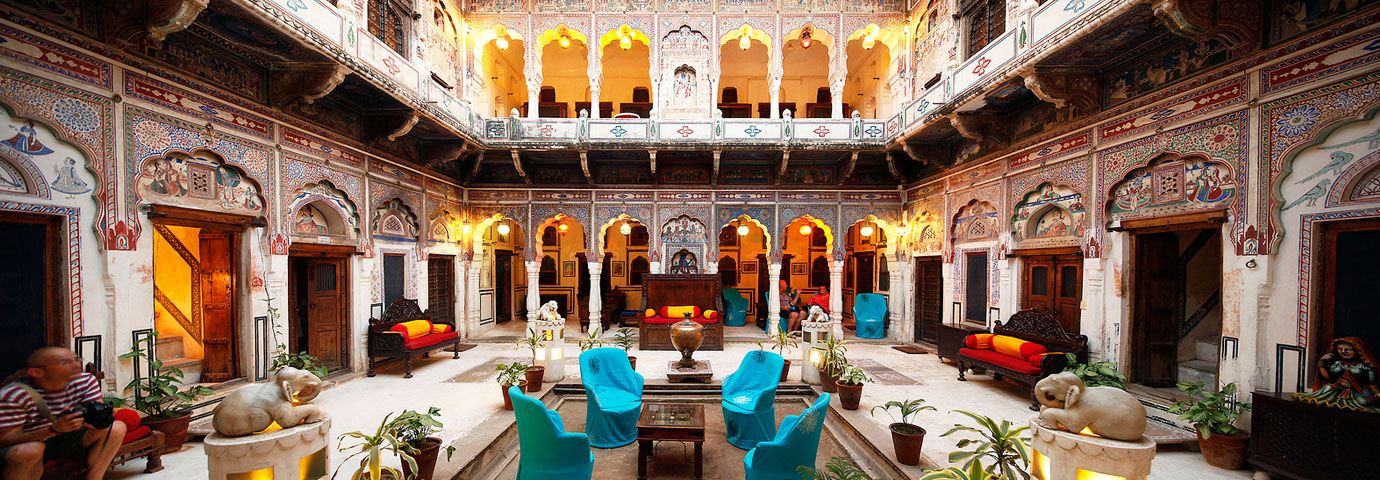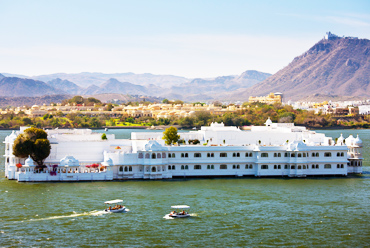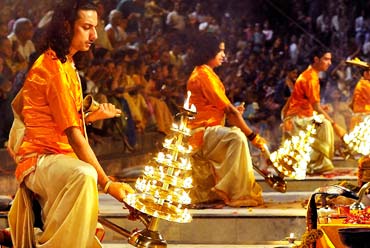Fast Facts
|
Population |
20,717 |
|
Language |
Hindi and English |
|
Best time to visit |
October to March |
In the heart of the Shekhawati region of Rajasthan lies the beautiful small town Mandawa, known throughout the state for its forts and havelis. The structures of this place reminds one of the cultural and social hotspot this place used to be in the bygone era.
Location
Mandawa is situated in the north Indian state of Rajasthan around 190 km off Jaipur, the capital of the state. The town lies between latitude 28.06° in the north and longitude 75.20° in the east. The fort town of Mandawa is well connected with the other places in region through a good network of roads.
Best Time To Visit
Like most of the other places in north India, Mandawa too has an extreme climate. The summers can be very hot with the mercury touching 40.5°C, whereas winters can be chilly and the temperature can fall below 10°C. The best season to visit this place is winter i.e. October to March. The annual rainfall is between 45 to 60 cm. Recommended clothing is light tropical for summer and light woolen for winter.
History
The compact and busy little market town of Mandawa was settled and fortified in 18th century by the dominant merchant families of the region. The wealthy businessmen of the village constructed many havelis and baolis with colored painting adorning their walls. Later on, with the migration of these merchant families, their old settlements remained in total obscurity with no one to look after them. Despite the time lapse and ignorance about these visual and architectural extravaganzas, their attraction did not fade and today they are some of the major attractions for the tourists visiting Rajasthan.
Tourists Attractions
Mandawa provides the visitors with a sense of discovery at every turn; battlements that offer spectacular views of the town below, a whimsical peacock weather van, and an arched window that overlooks the verdant garden visited by peacocks. Most importantly, the fact that no two rooms are alike in the palace here. In the zenana or women's quarters, one room offers antique murals, another has a marble fountain, and the turret room boasts of walls that are seven feet thick. Looking out from the window of the turret room, it is easy to imagine the marauding bandits that once roamed freely here. Little wonder then that the family crest contains the motto, 'Veer Bhogya Vasundhara', which translates into 'the brave shall inherit the earth'.
Founded in the 18th century, the medieval fort of Mandawa dominates the town with a painted arched gateway adorned with Lord Krishna and his cows. The Chokhani and Ladia havelis and the street with Saraf havelis are some of the splendid examples of this region's havelis.
The Binsidhar Newatia Haveli has some curious paintings on its outer eastern wall-a boy using a telephone, and a European woman in a car driven by a chauffeur. The Gulab Rai Ladia Haveli has some defaced erotic images.
Places Around Mandawa
Nawalgarh is situated around 37 km south of Mandawa and is famous for its fort, built in 1737. Other attractions here include havelis of Anandi Lal Poddar, Aath Haveli, Hem Raj Kulwal Haveli, Bhagton Ki Haveli, and Khedwal Bhavan.
Parsurampura is located some 43 km south east of Mandawa and has the distinction of having the best-preserved and oldest paintings in the Shekhawati region.
Mukundgarh is around 25 km southeast of Mandawa and is a tiny village famous for its fort and havelis.
Dundlod is situated around 30 southeast of Mandawa and is famous for its fort and havelis. The attractions in this place include the Jagathia Haveli, Satyanarayan Temple, and Tuganram Goenka Haveli apart from the Dundlod fort and palace.
Fatehpur was established in 1451 as a capital for Muslim nawabs but was taken by the Shekhawat Rajputs in the 18th century. Some of the attractions include the Mahavir Prasad Goenka Haveli, Gauri Shankar Haveli, Nand Lal Devra Haveli, and Harikrishnan Das Sarogi Haveli apart from a 17th century baoli.
Jhunjhunu is the district headquarters and the largest town in the Shekhawati region. The town was founded by the Kaimkhani nawabs in the mid-15th century, and stayed under their control until it was taken by the Rajput ruler Sardul Singh in 1730. The major attractions in the city include the Khetri Mahal, Bihariji Temple, Modi Haveli, and Kaniram Narsinghdas Tiberwala Haveli.
How To Reach
By Air
The nearest charter airport is Jhunjhunu, the largest city in the region and the district headquarters. Jaipur is the nearest airport for regular flights. Many domestic airlines operate out of Jaipur and connect it with other cities in the country.
By Rail
Jhunjhunu is the nearest convenient railhead and one can take trains for Sikar, Jaipur, and Delhi from Jhunjhunu.
By Road
Road networks crisscross the entire region of Shekhawati, and Mandawa is well connected with other places in the region by private as well as government buses. We can do road drive from delhi, Agra, Jaipur, Sawai Madhopur .It is a good idea for groups of four or five persons to hire taxis to move around the place.




